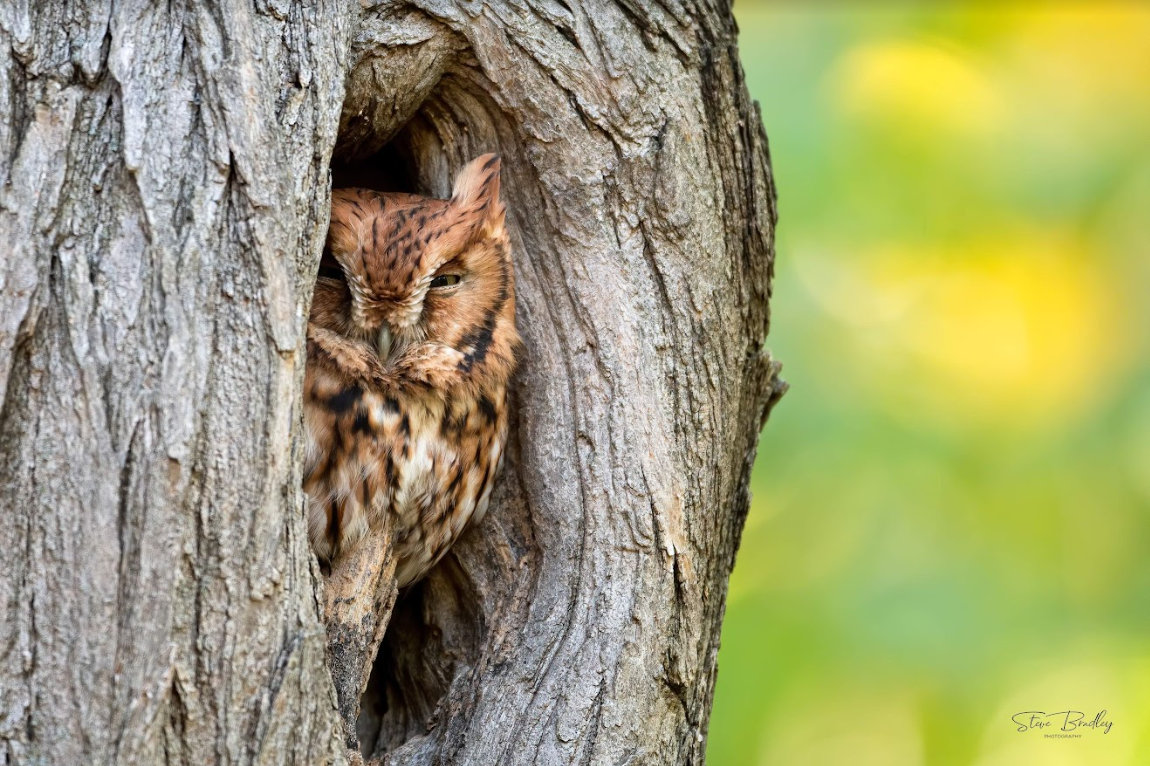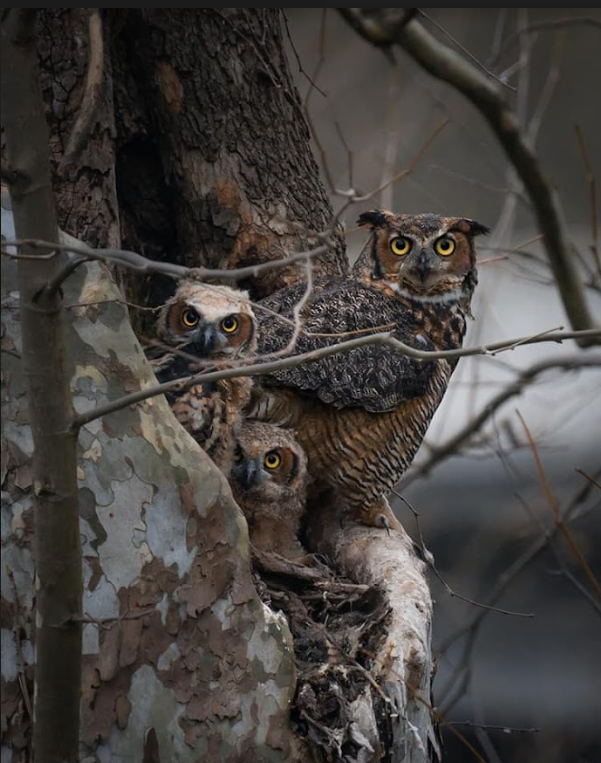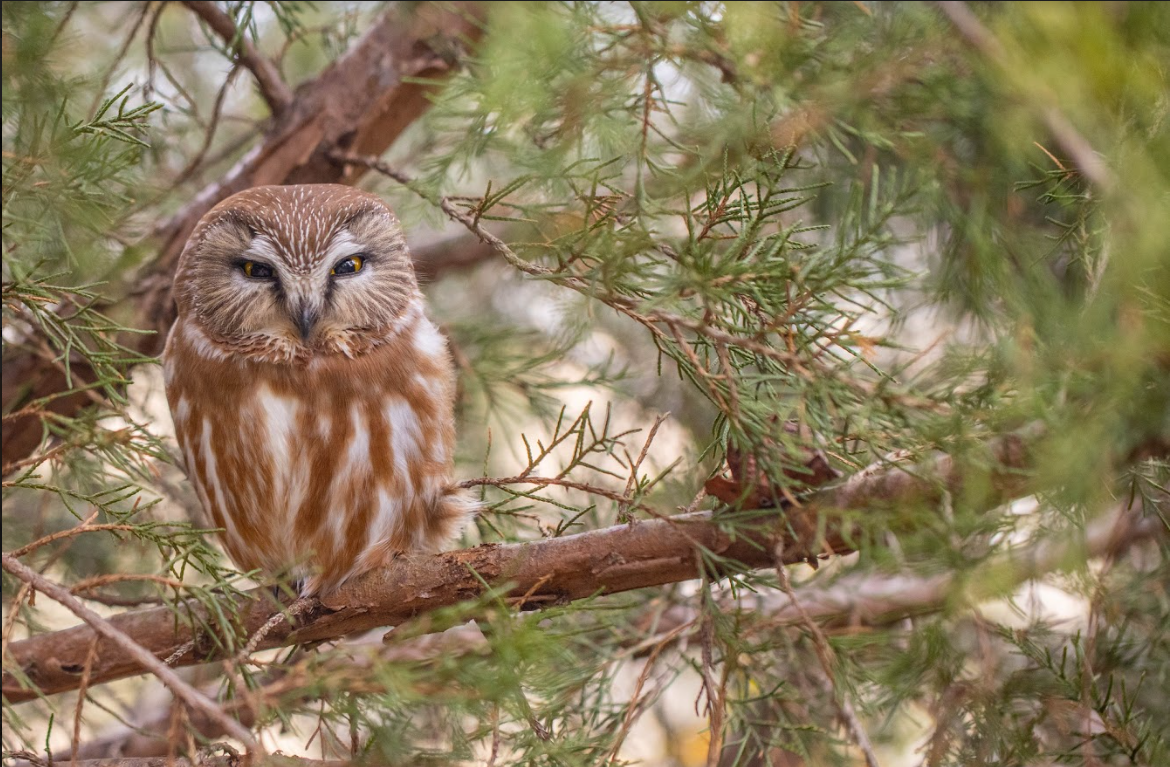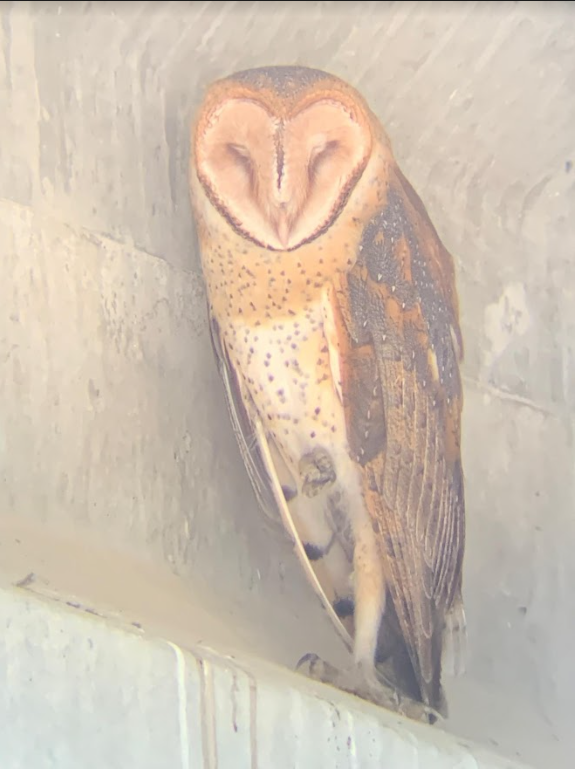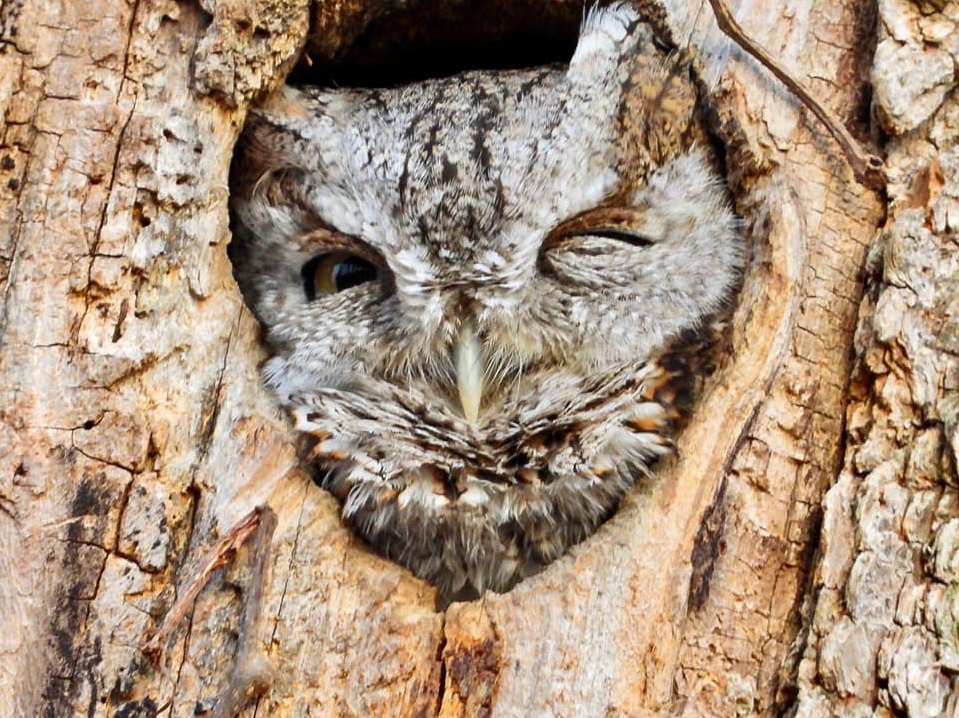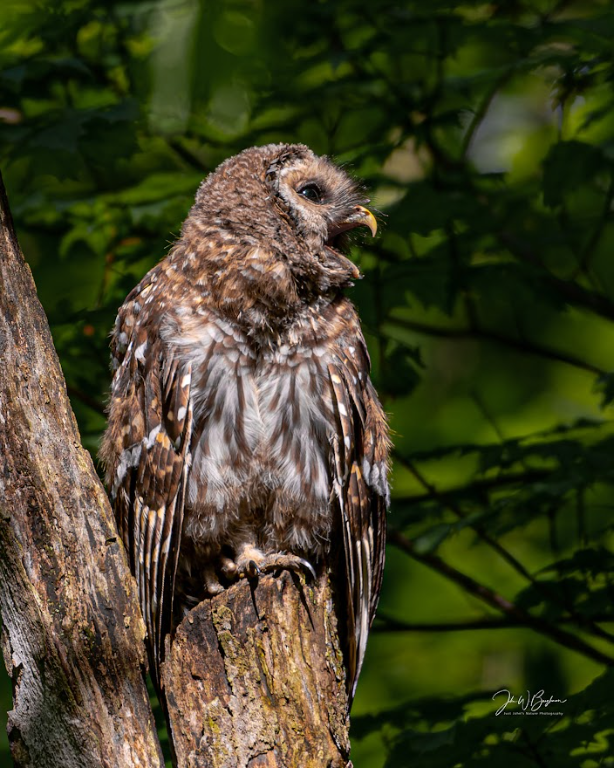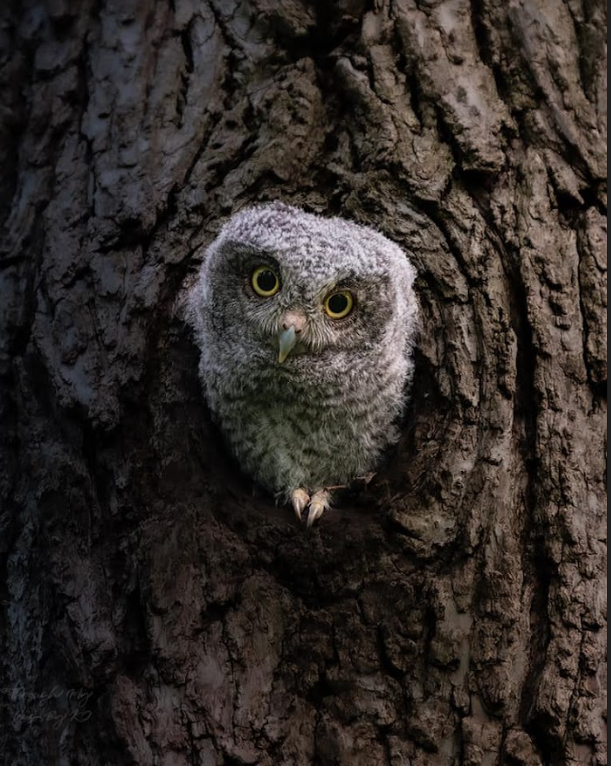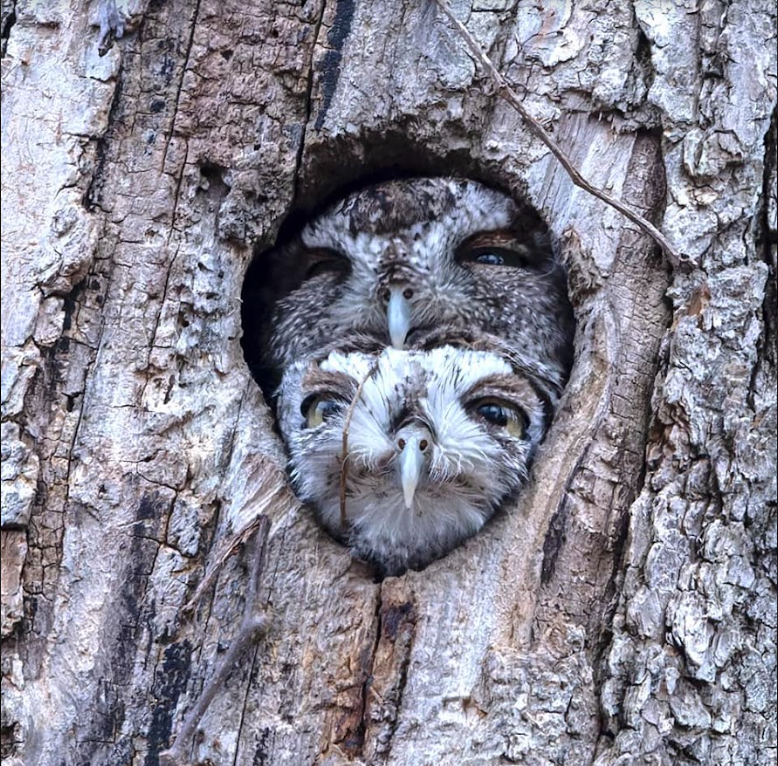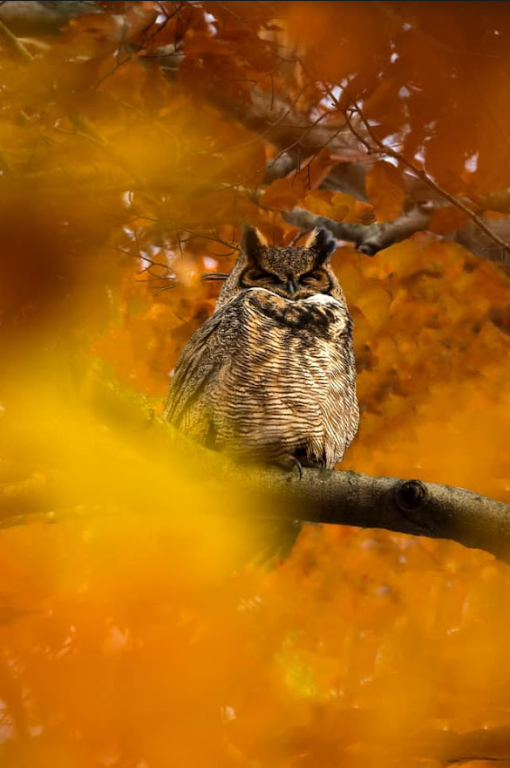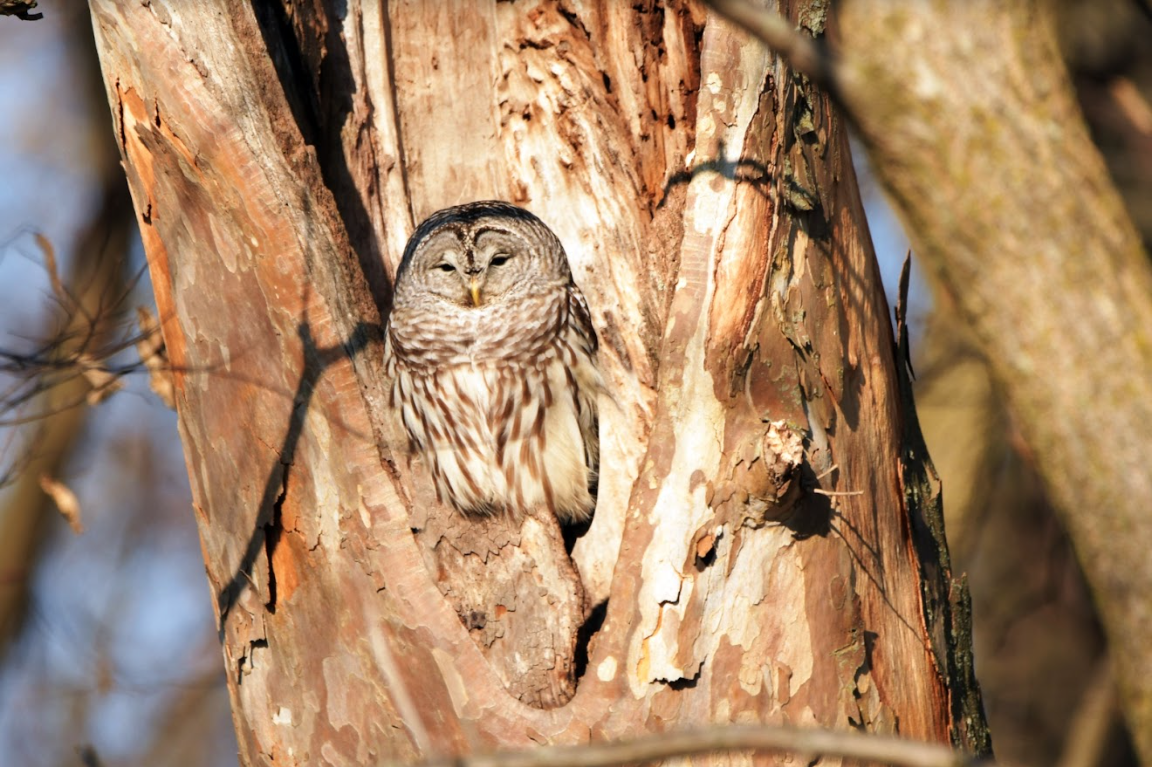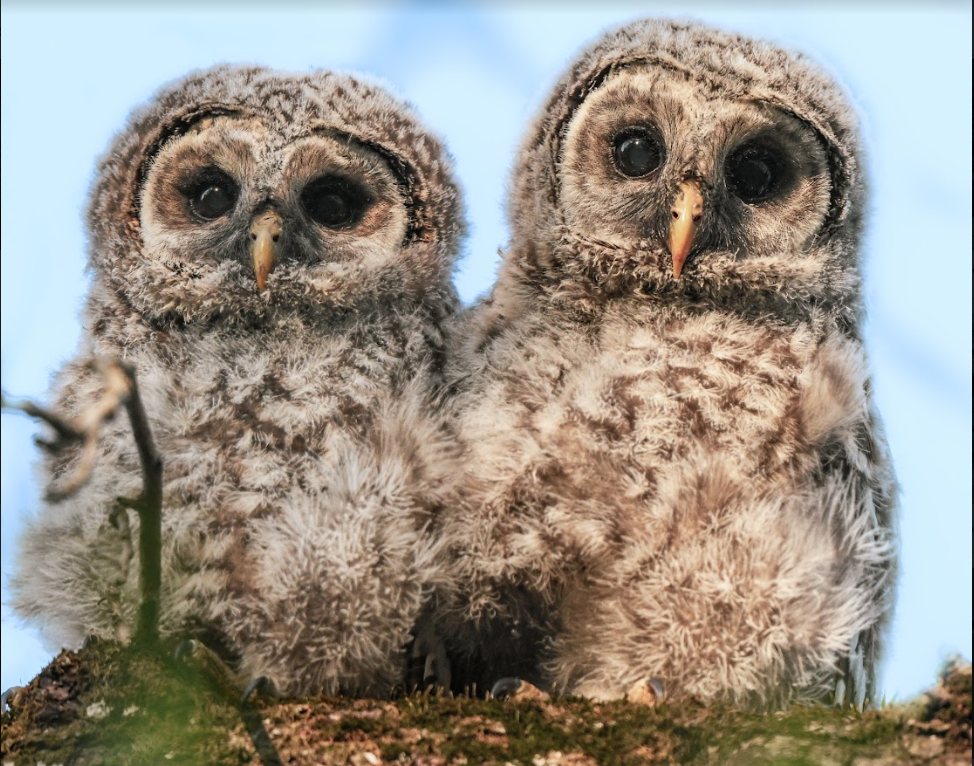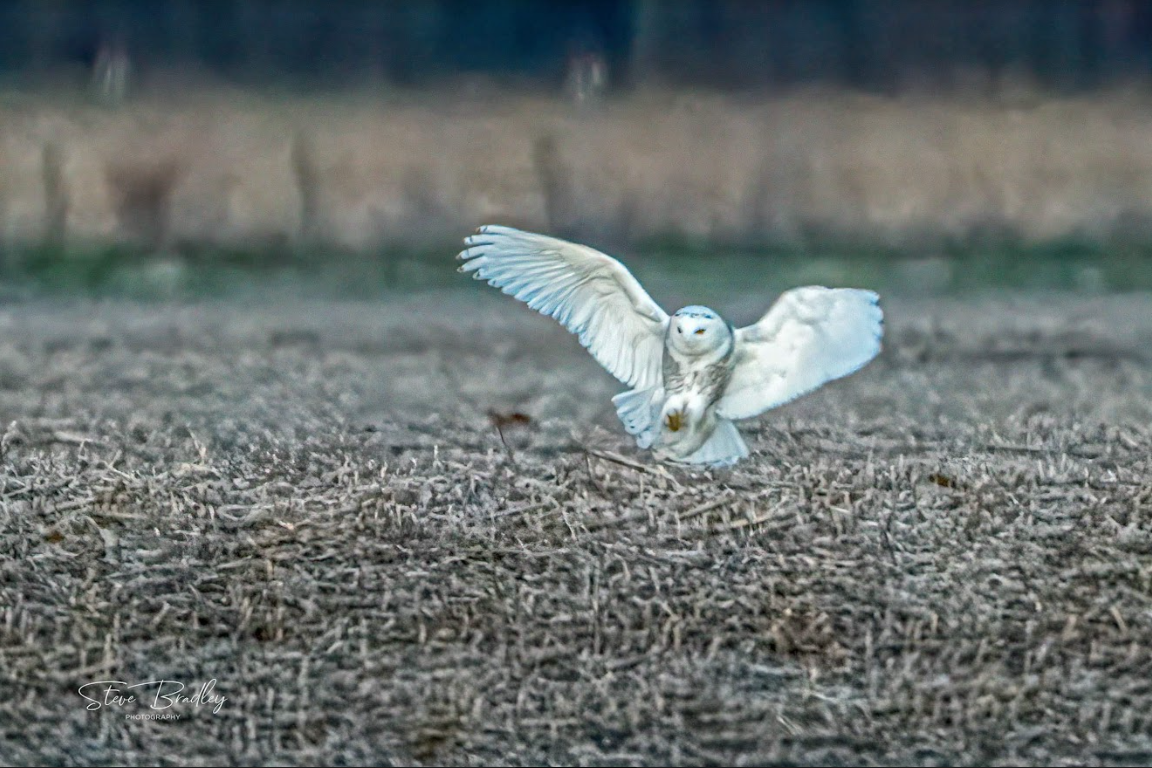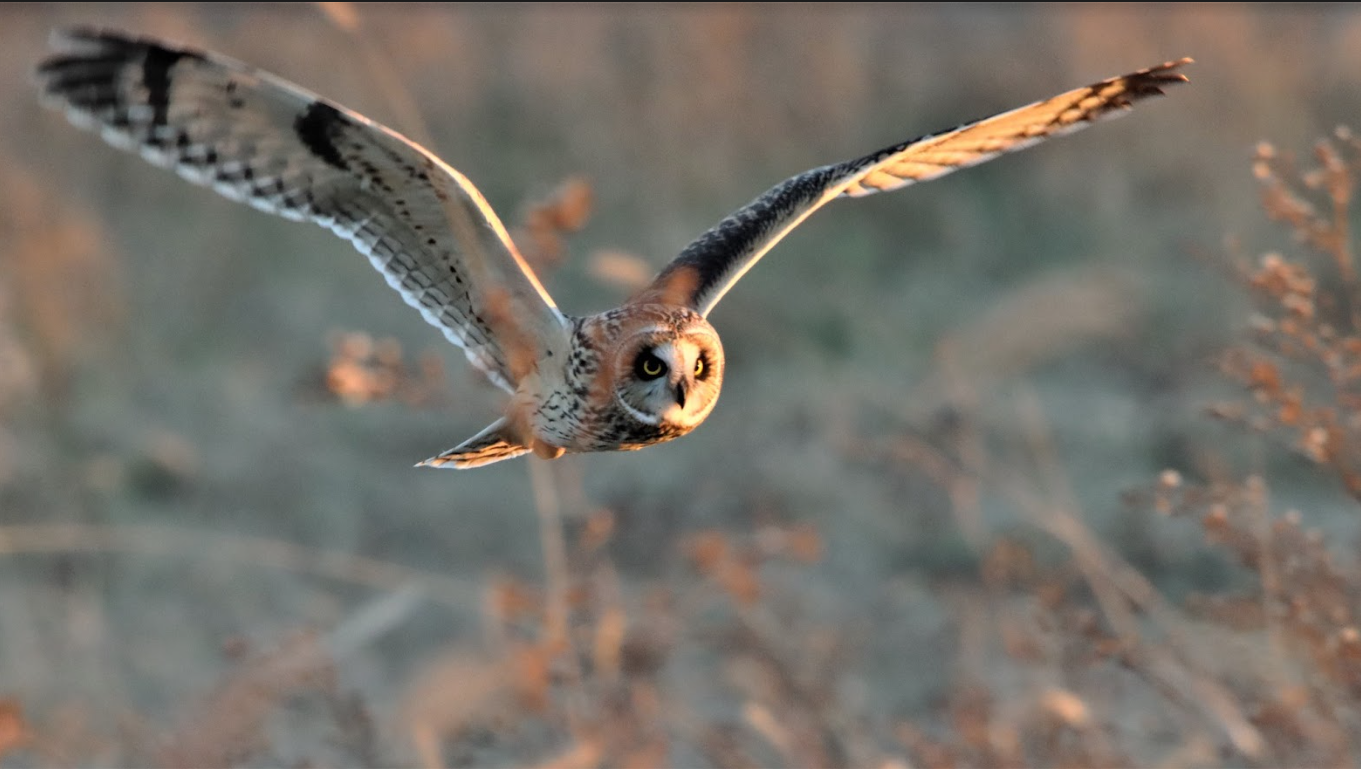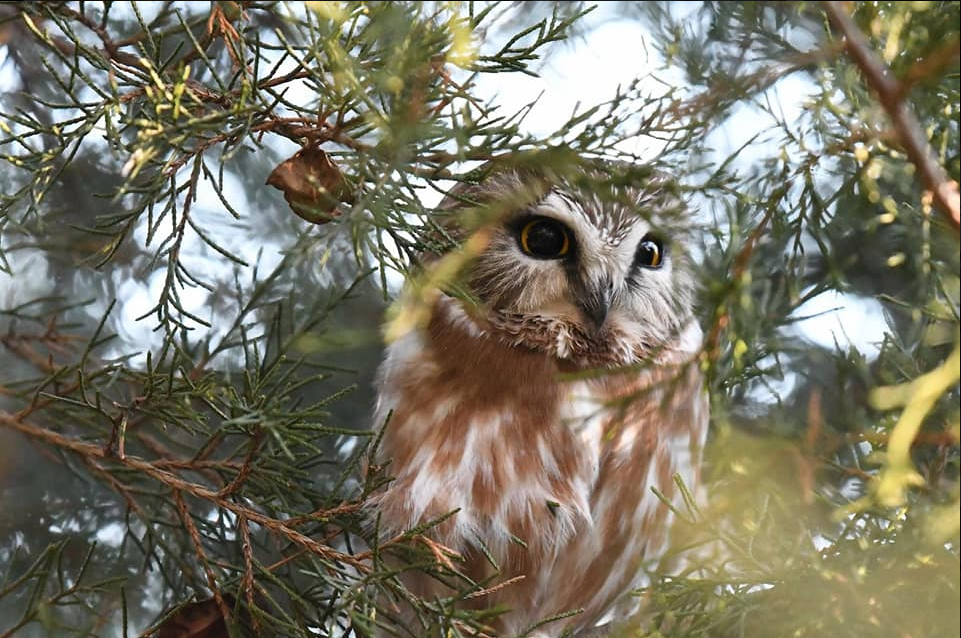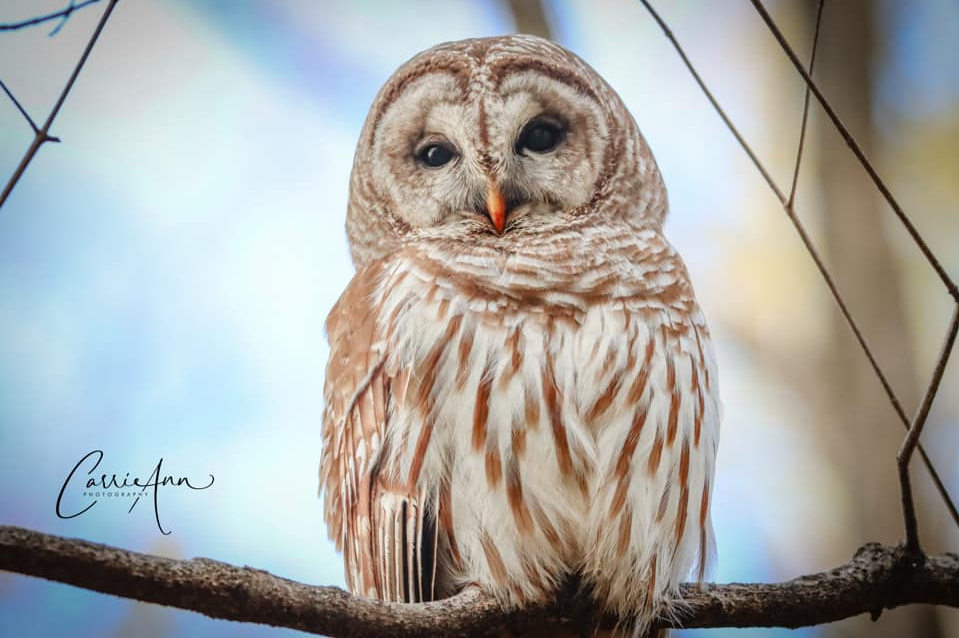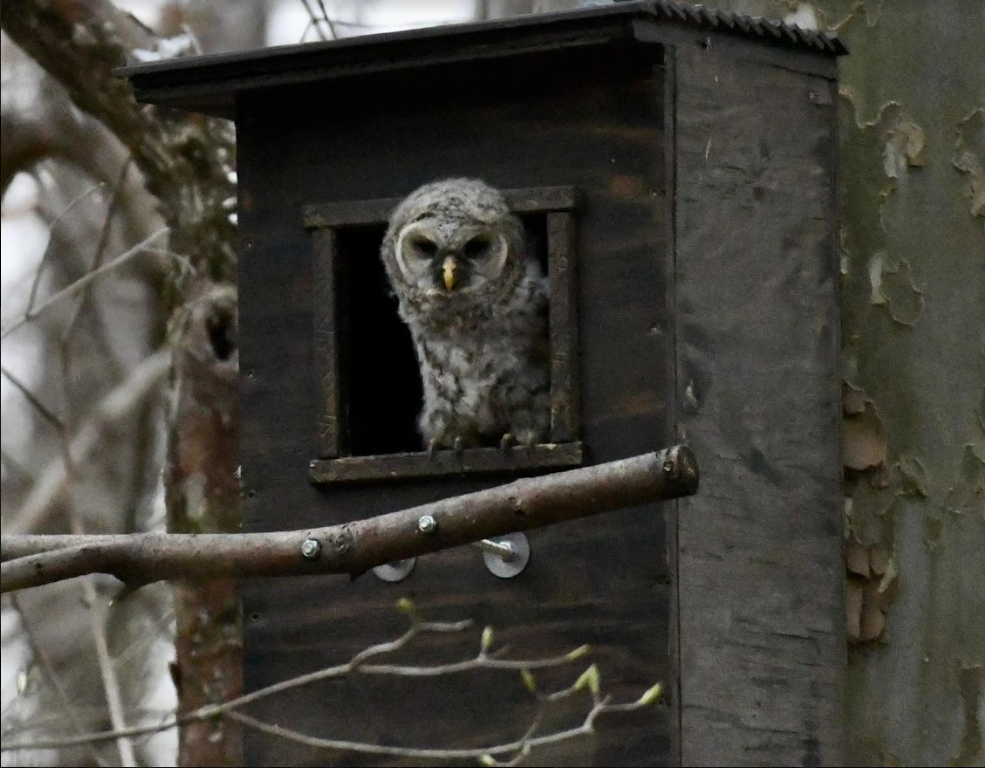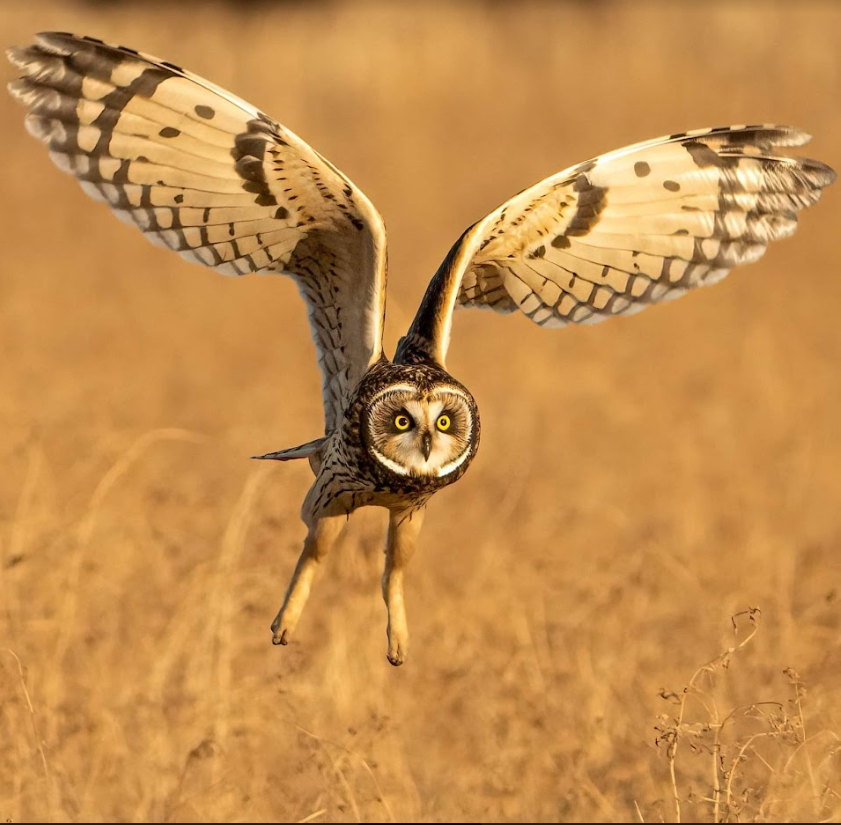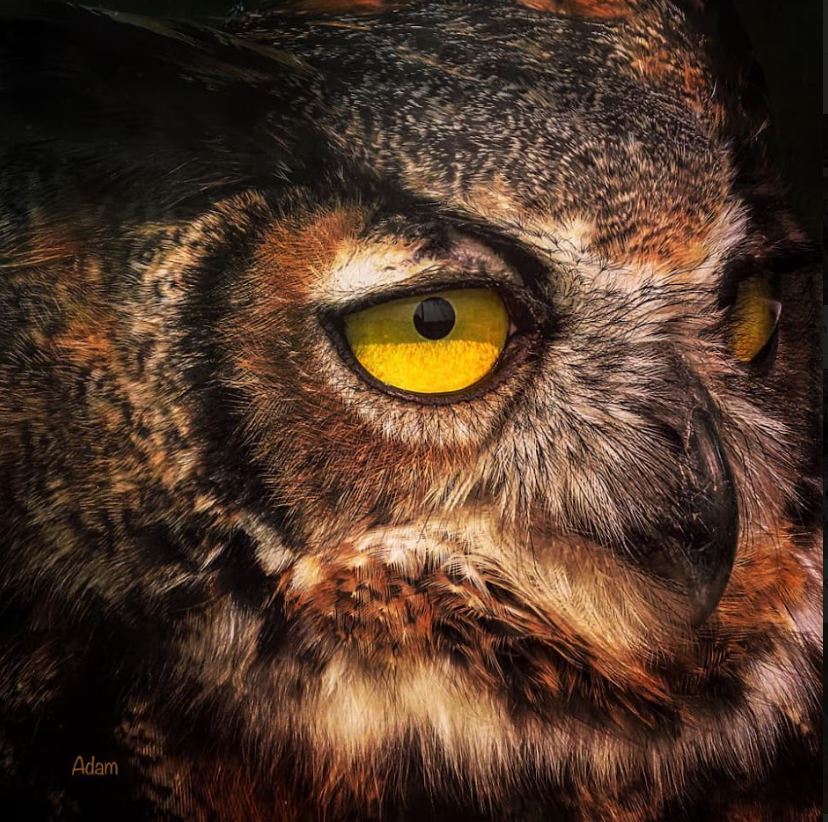Stranger Things (Than Owls)
By Olivia Bautch, Naturalist at the Eagle Creek Park Ornithology Center
Ghosts. Monsters. Witches. Symbols of October and Halloween. Enter owls? Why do we as a culture consider owls to be so spooky? Let’s be honest, there are birds out there, skulking in our forests, that are much stranger.
Consider the shadow of a nighthawk erratically darting like a bat against a fading sky. When one of its southern cousins, the Chuck-will’s-widow, crosses its path with that of our migratory warblers, it swallows one whole. Starlings and blackbirds form a deafening, monstrous black cloud that encompasses everything in the sky. And what about onyx-colored corvids, who memorize your face and intellectually conspire against their avian fellows to eat their eggs and young? Red-eyed night-herons hunt exclusively at night and Northern Goshawks of the Northwoods are deathly defensive of their nests. Around the globe, we find giant prehistoric cassowaries known to be some of the world’s most violent birds, and the one-of-a-kind Shoebill, which eats crocodiles.
Let’s talk about how owls aren’t as scary as the birds just mentioned. According to mythology, owls’ eyes, hooked beaks, sharp talons, and fierce hunting skills are all reasons the birds were known to be maleficent and deadly. In reality, these four points are basic characteristics that qualify a bird as a “bird of prey”. Nothing abnormal here.
The last few arguments mythology gives as to why owls are creepy include silent flight, calls, and being active at night. If you buy into the Halloween hype of haunted owls, or even if you don’t, read on, and let’s bring owl behavior out of the shadows.
Legend tells of horrific hooting and screeching of owls. The only owl in the United States who truly screeches is the Barn Owl, which admittedly would be off-putting at midnight. Though everyone else makes surprisingly subtle sounds. Hear the low hoot of a Long-eared Owl, a Screech-Owl’s whinny, the shorebird-like peeping sound of the Boreal Owl, or a Short-eared Owl’s cat-like meow. I suppose any of those sounds could seem scary if you’re in the woods at night, but then again, couldn’t anything?
A classic soundtrack to trick-or-treat and scary movies is the “hoo, hoo-hoo” of the quintessential Great Horned Owl. This species is indeed powerful, though it has its quirks too. All owls have spectacular eyesight and equally good hearing, but this species has no sense of smell. This results in Great Horned Owls being one of the skunk’s only predators.
If you are lucky enough to hear a Great Horned in February, that’s correct, February, not October, you may hear courtship calls. Most raptors, including owls, breed in late winter, so courtship happens early in the year. As you listen, pay attention to the tones of the owl. There may be more than one. The male owl is lower pitch, while the female is higher.
Not all owls dwell in darkness. While I lived in Wisconsin, I found two species of owls visiting from the Boreal Forests. These birds sat high upon their perch in broad daylight (this is the only way I would have found an owl), hunting in the same hours. Northern Hawk Owls are named for their hawk-like behaviors, including diurnal hunting, and an abnormally long tail. However, these birds aren’t usually migratory, and they may also hunt at night.
The Snowy Owls’ reputation precedes them, with sightings featured on the nightly news every year. Notice that the backdrop is always lit. This is because Snowy Owls are mostly diurnal. Think about their breeding grounds in Alaska- summertime is complete daylight, but winter is complete darkness. In winter, Snowy Owls migrate to Canada or other grounds where the sunlight is still visible.
Other owls are what we consider crepuscular, hunting during dawn and dusk, and the rest are in fact active at night. We may be terrified of an owl silently rushing between the dark trees overhead. Though nocturnal owls, like any animal, are more afraid of us than we are of them. This is why in captivity this group of birds does not do well when exposed to the public. Think about it, as a nocturnal owl, you are not only removed from the world, a solitary predator in your own wild habitat, but you are awake when the rest of the world is asleep, silent, still. You are familiar with the sound of crickets and the wind and the rodents scurrying through the tall grass. If you were to be brought into the lights, sirens, and chatter of the city, your senses would be overwhelmed.
Owls, like all birds, can exhibit a lot of personality. How many memes have you seen of the owl’s head turn or head tilt? Large eyes, definitive markings, and spinal mobility give owls almost humanlike facial expressions. One minuscule owl of the south can even be observed popping in and out of burrows in the ground. To add to its humor, these Burrowing Owls with pug-like face markings often frequent golf courses in Florida.
We often think of owls as large, stately predators, when a large portion of species are actually very small. Screech-Owls, Pygmy Owls, Elf Owls, and Saw-Whet Owls are all about the size of a Blue Jay. At this size, they aren’t taking down large prey. They may prey on songbirds and mammals as large as a rabbit, and also snack on beetles, crayfish, and earthworms. Ferocity, I suppose is all relative.
Maybe it’s more fun to fill our stories with eerie predators than biological facts. We all love a bit of suspense and drama, and sometimes a bit of magic. Something in us inherently likes to imagine the unimaginable. Just know that owls (or bats, or wolves, etc.) don’t abide by bad karma or superstition. They are another part of our ecology, built for silent strength and skill. See, everything looks a lot less scary when brought out of the dark.
Feature Image courtesy of Steve Bradley. Gallery Image photo credits in order of appearance: Colton Evens, Jeff Timmons, Jeremiah Oden, Jess Tatum, John Baughman, Mike Koeske, K.j. Quraish, Russ Hawkins, Nicculus Pandorf, Sally Slick, Steve Bradley, Thomas May, Tina Ferguson Rosier, Carrie Jordan, Carlos Negron Vega, Austin Obermeyer, and Adam Seif.

